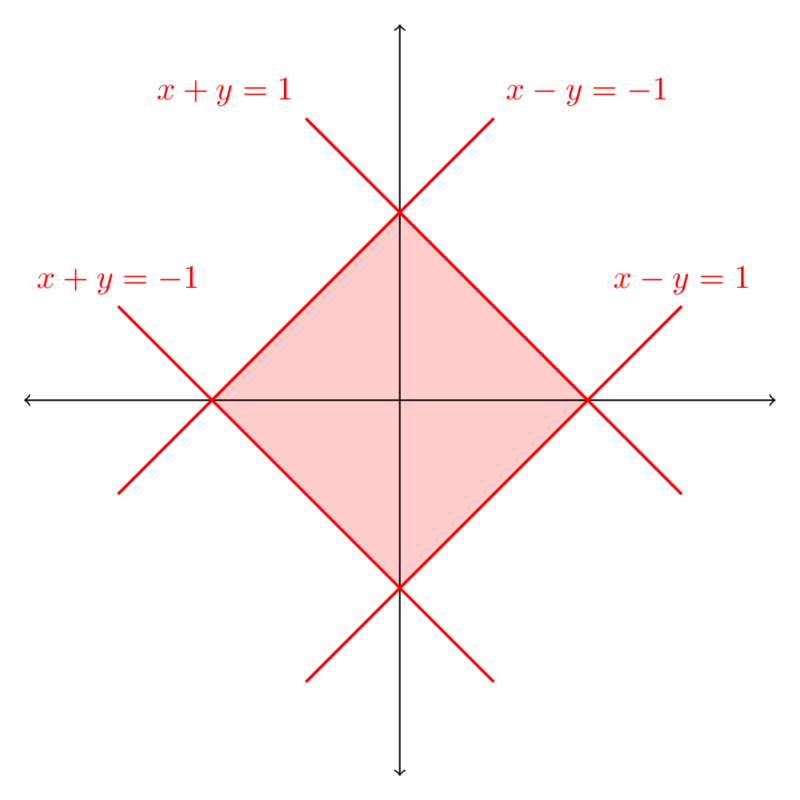Week 4 Discussion Notes
Table of Contents
Change of Variables
We're already familiar with some change of variables: polar coordinates, where x=rcosθ, y=rsinθ. When integrating, this gives us
dxdy=rdrdθ.
In general, coordinate changes are of the form
(x,y)=(x(u,v),y(u,v))=G(u,v).
In other words, G changes coordinates from (u,v) to (x,y). With this notation, we get the formula for integration:
dxdy=∣Jac(G)∣dudv,
where
JacG=det⎝⎛∂u∂x∂u∂y∂v∂x∂v∂y⎠⎞.
In the matrix above, the first column is all the u-derivatives, and the second column is all the v-derivatives.
To help you remember this, you should hopefully remember u-substitution in 1D:
u=u(x)⟹du=u′(x)dx.
Copying this, we get something like this:
(x,y)=G(u,v)⟹dxdy=‘‘G′(u,v)"dudv
But instead of G′(u,v), we put the Jacobian (in absolute values) there instead.
Example 1.
With polar coordinates (x,y)=(rcosθ,rsinθ),
JacG=det(cosθsinθ−rsinθ−rcosθ)=rcos2θ+rsin2θ=r,
so
dxdy=rdrdθ,
which is exactly what we expect.
Example 2.
Find a change of variables to evaluate ∬R(x+y)2ex2−y2dxdy, where R is the square with vertices (1,0),(0,1),(−1,0),(0,−1).
Solution.

We can express the region R via
R={−1≤x+y≤1,−1≤x−y≤1}.
This suggests that we let u=x+y and v=x−y because the region is a lot easier to express in these coordinates:
R={−1≤u≤1−1≤v≤1}.
Solving for x and y, we get
(x,y)=(2u+v,2u−v),
so the Jacobian is
JacG=det⎝⎛2121−21−21⎠⎞=−21.
(I switched u and v, so this is a little different from what's on the recording.)
Thus,
dxdy=∣JacG∣dudv=21dudv.
Applying the change of variables to the integral,
∬R(x+y)2ex2−y2dxdy=21∫−11∫−11u2euvdudv=e2.
